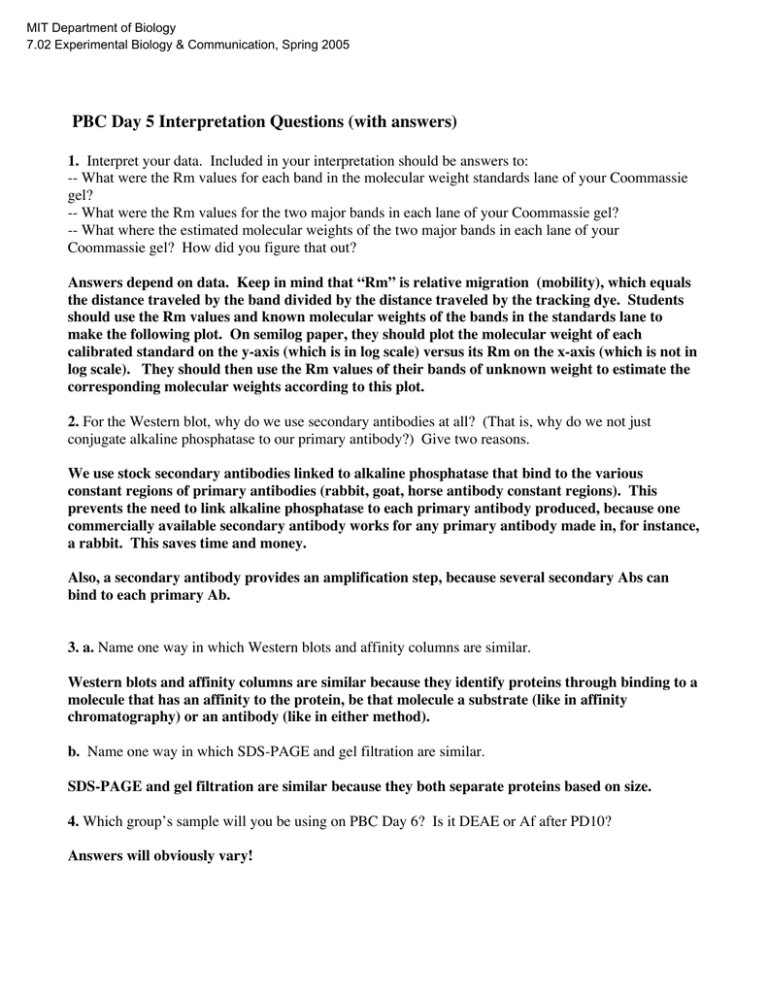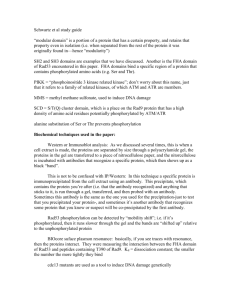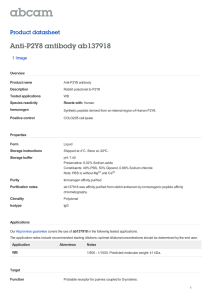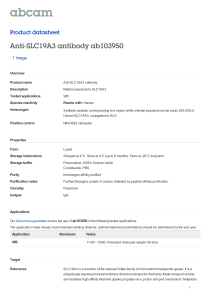Document 13525758
advertisement

MIT Department of Biology 7.02 Experimental Biology & Communication, Spring 2005 PBC Day 5 Interpretation Questions (with answers) 1. Interpret your data. Included in your interpretation should be answers to: -- What were the Rm values for each band in the molecular weight standards lane of your Coommassie gel? -- What were the Rm values for the two major bands in each lane of your Coommassie gel? -- What where the estimated molecular weights of the two major bands in each lane of your Coommassie gel? How did you figure that out? Answers depend on data. Keep in mind that “Rm” is relative migration (mobility), which equals the distance traveled by the band divided by the distance traveled by the tracking dye. Students should use the Rm values and known molecular weights of the bands in the standards lane to make the following plot. On semilog paper, they should plot the molecular weight of each calibrated standard on the y-axis (which is in log scale) versus its Rm on the x-axis (which is not in log scale). They should then use the Rm values of their bands of unknown weight to estimate the corresponding molecular weights according to this plot. 2. For the Western blot, why do we use secondary antibodies at all? (That is, why do we not just conjugate alkaline phosphatase to our primary antibody?) Give two reasons. We use stock secondary antibodies linked to alkaline phosphatase that bind to the various constant regions of primary antibodies (rabbit, goat, horse antibody constant regions). This prevents the need to link alkaline phosphatase to each primary antibody produced, because one commercially available secondary antibody works for any primary antibody made in, for instance, a rabbit. This saves time and money. Also, a secondary antibody provides an amplification step, because several secondary Abs can bind to each primary Ab. 3. a. Name one way in which Western blots and affinity columns are similar. Western blots and affinity columns are similar because they identify proteins through binding to a molecule that has an affinity to the protein, be that molecule a substrate (like in affinity chromatography) or an antibody (like in either method). b. Name one way in which SDS-PAGE and gel filtration are similar. SDS-PAGE and gel filtration are similar because they both separate proteins based on size. 4. Which group’s sample will you be using on PBC Day 6? Is it DEAE or Af after PD10? Answers will obviously vary!


